Saintes-Maries-de-la-Mer (Saint Marys of the Sea) is the capital of Camargue in the south of France. Van Gogh made a trip to the small Mediterranean fishing village at the beginning of June in the summer of 1888. At the time, Van Gogh was living in Arles and took the week-long trip hoping to recover from a bout of health issues. While on the trip, he created a number of seaside drawings and paintings; two paintings of the sea, one painting of the village and nine drawings. On June 4, 1888 he wrote to Theo saying,
“I brought three canvases and have covered them – two marines, a view of the village, and then some drawings which I will send you by post when I return to Arles tomorrow.”
One of the paintings was Three White Cottages in Saintes-Maries. Van Gogh said,
“I do not think there are 100 houses in the village, or town. The chief building, after the old church and an ancient fortress, is the barracks. And the houses – like the ones on our heaths and peat bogs in Drenthe; you will see some specimens of them in the drawings.”
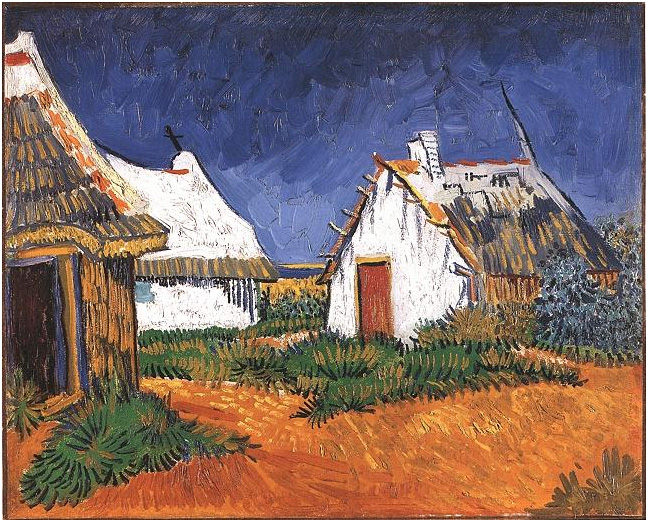 |
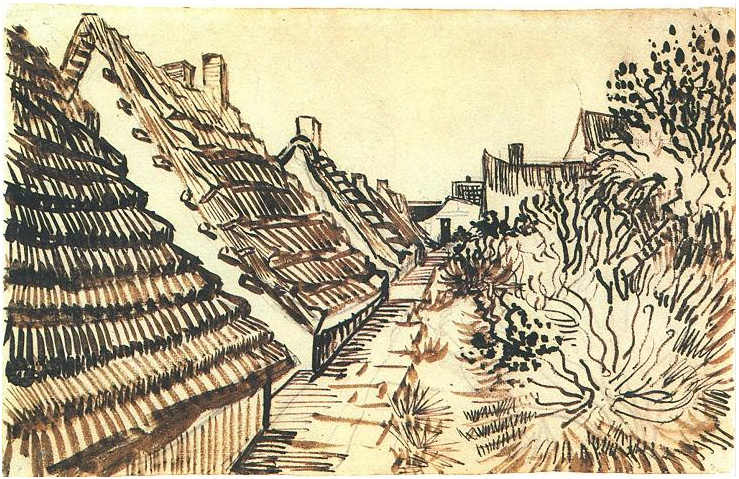 |
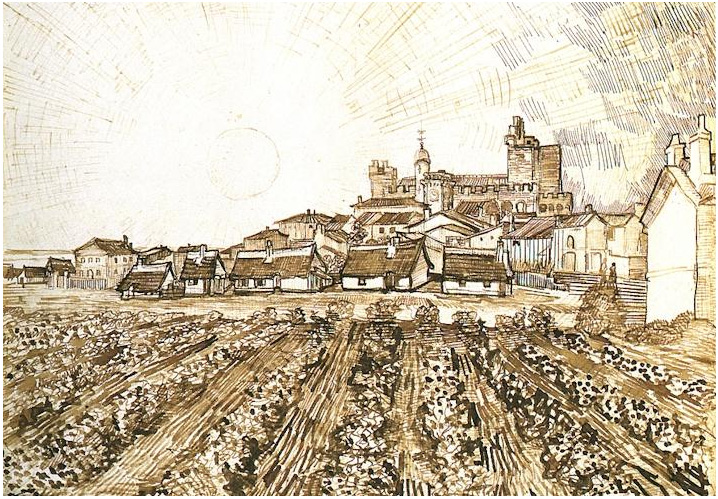 |
The other two paintings were seascapes. In Seascape at Saintes-Maries, Van Gogh experimented with the light effects on the water Van Gogh said,
“The Mediterranean has the colours of mackerel, changeable I mean. You don’t always know if it is green or violet, you can’t even say it’s blue, because the next moment the changing light has taken on a tinge of pink or gray.”
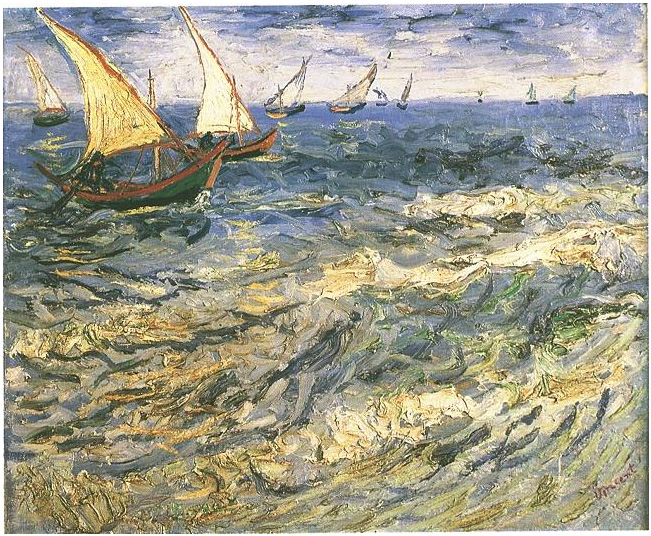 |
Another version of Seascape at Saintes-Maries has helped researchers analyze Van Gogh’s working methods while visiting the fishing town. According to the Van Gogh Museum this painting has grains of sand dried in the paint. A conservator was able to analyze the painting and determine that Van Gogh applied a layer of paint, sand blew over it, and then he added another layer of paint before the first layer had time to dry. The sand granules were moved by his brush and left trails of while canvas exposed. They also discovered that final touchups were made to the painting when it was returned to Van Gogh’s studio in Arles.
In his letter Van Gogh had said,
“The shore here is sandy, neither cliffs nor rocks – like Holland without the dunes, and bluer.”
 |
It is evident that Van Gogh found some level of peace at Stes-Maries,
“One night I went for a walk by the sea along the empty shore. It was not gay, but neither was it sad – it was – beautiful. The deep blue sky was flecked with clouds of a blue deeper than the fundamental blue of intense cobalt, and others of a clearer blue, like the blue whiteness of the Milky Way. In the blue depth the stars were sparkling, greenish, yellow, white, pink, more brilliant, more emeralds, lapis lazuli, rubies, sapphires. The sea was very deep ultramarine – the shore a sort of violet and faint russet as I saw it, and on the dunes (they are about seventeen feet high) some bushes Prussian blue.”
Before Van Gogh left to return home, he captured some fishing boats in drawings which were then turned to paintings. On June 5, 1888 he wrote,
“I made the drawing of the boats just as I was going to leave, very early in the morning, and I am working on the picture after it, a size 30 canvas with more sea and sky on the right.”
 |
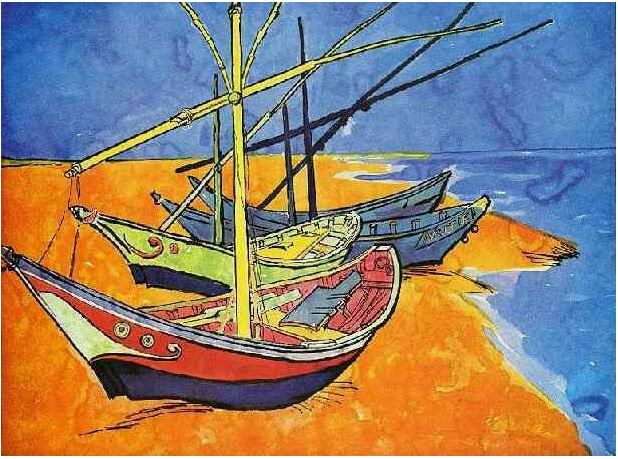 |
 |
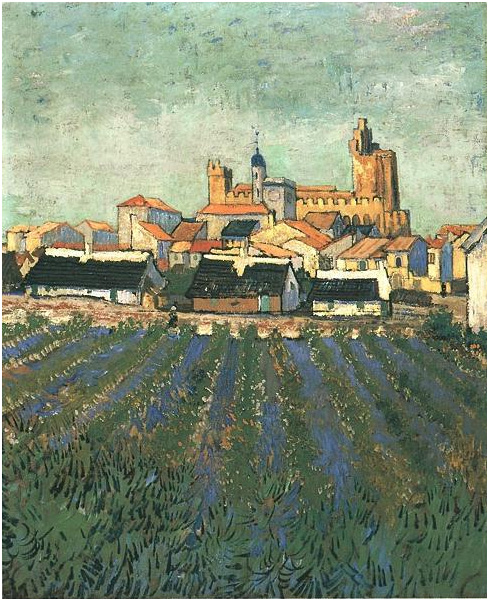 |
Letter Sources:
http://www.webexhibits.org/vangogh/letter/18/499.htm
http://www.webexhibits.org/vangogh/letter/18/500.htm


1 Comment